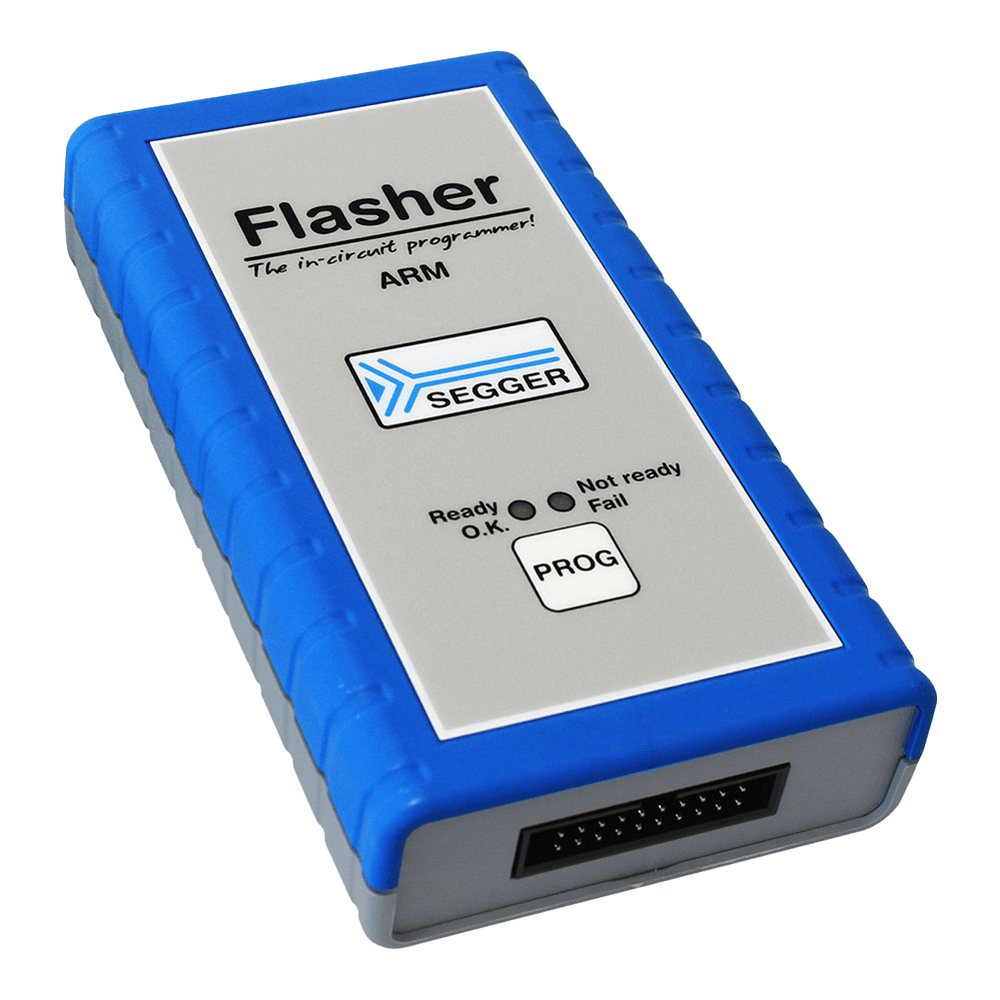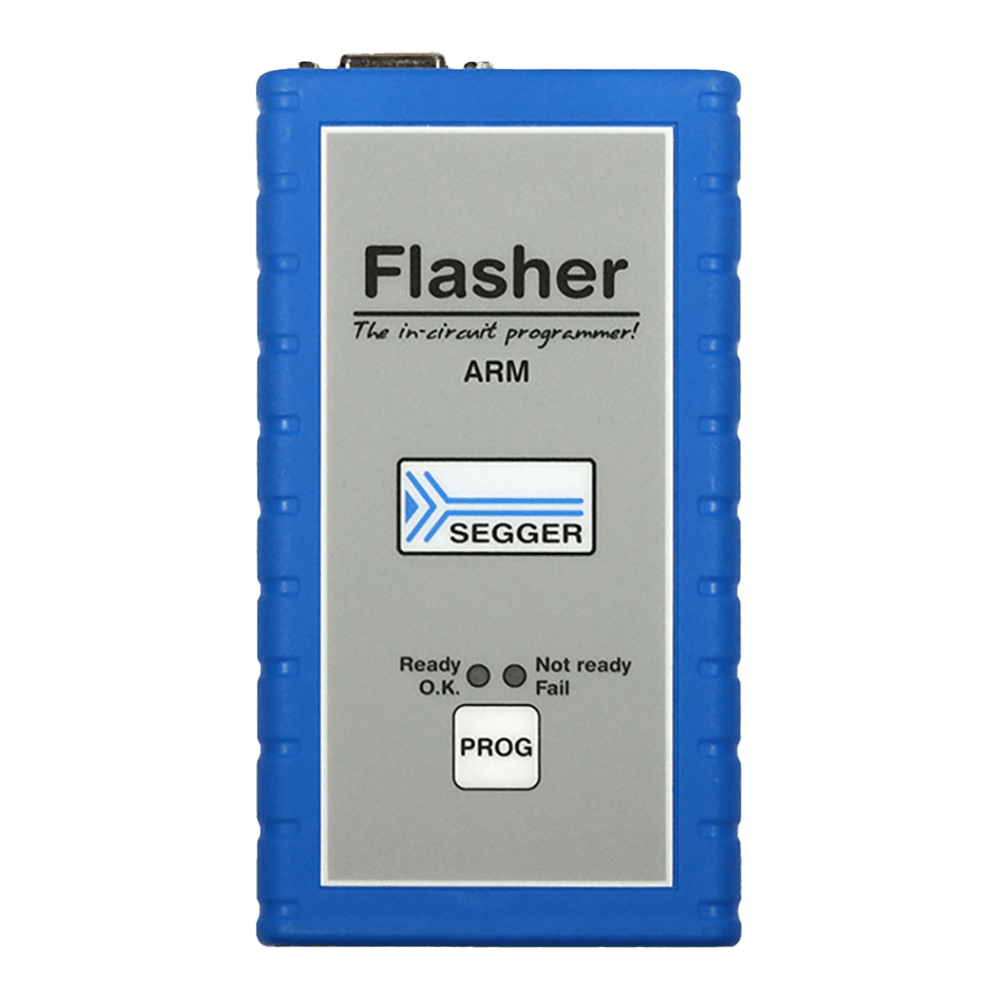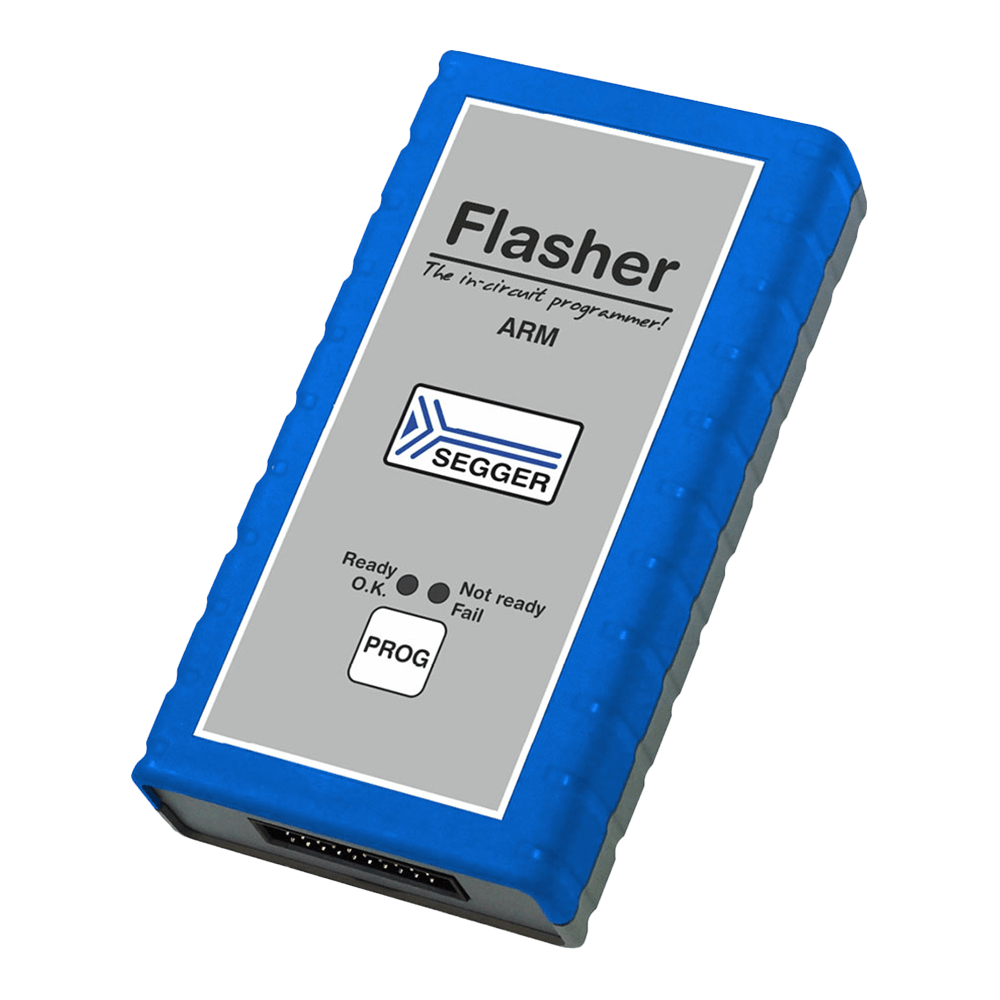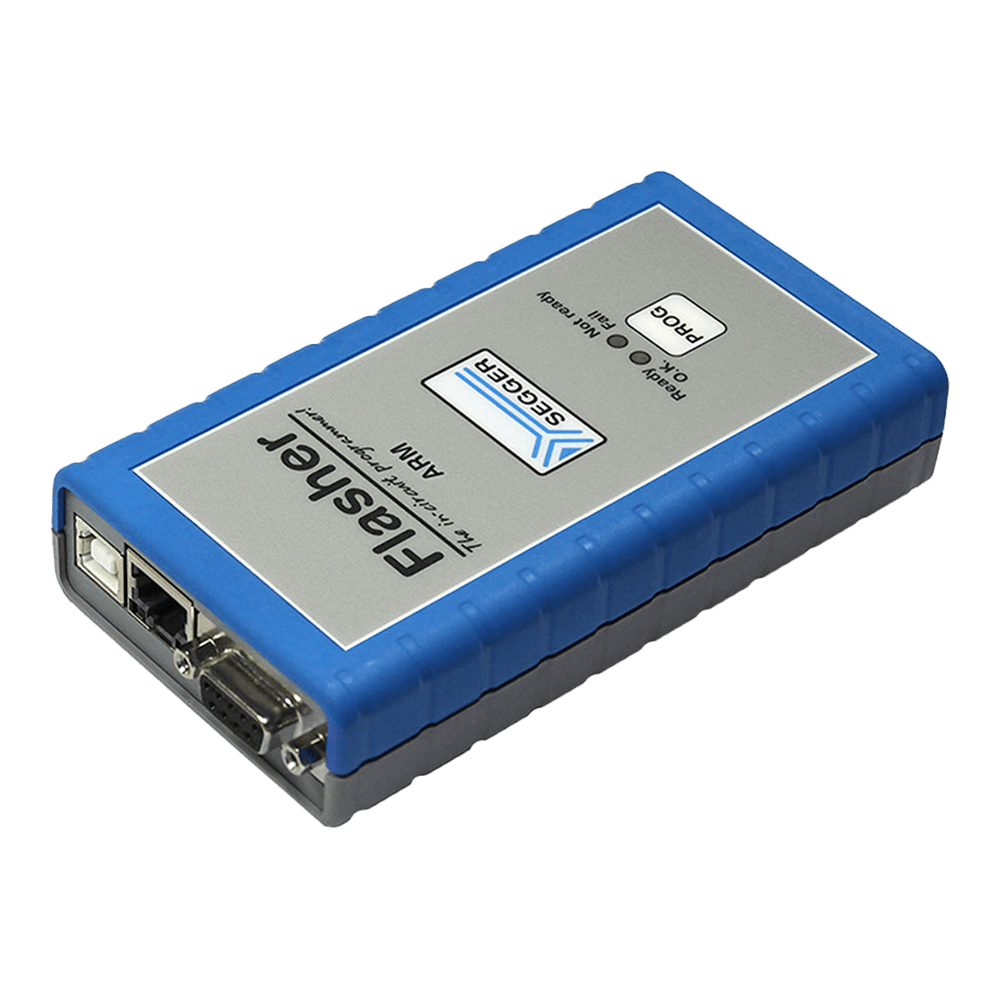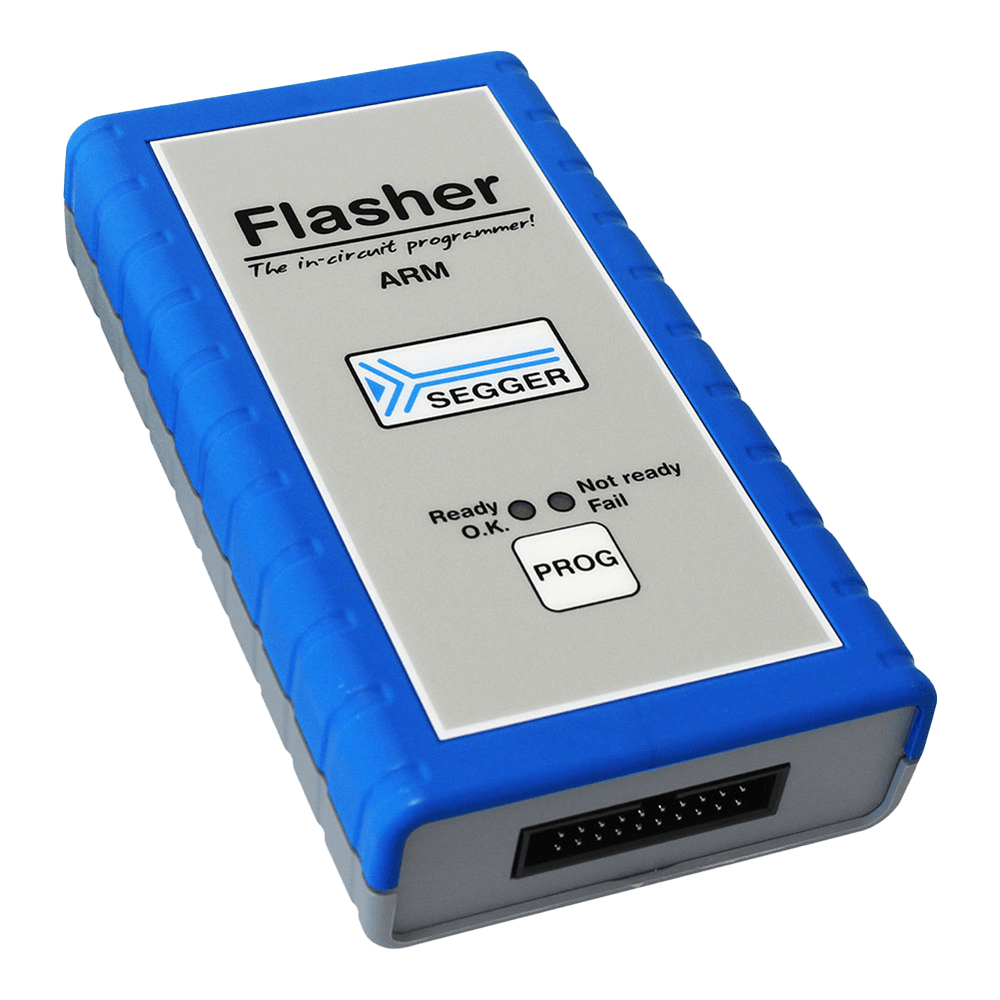
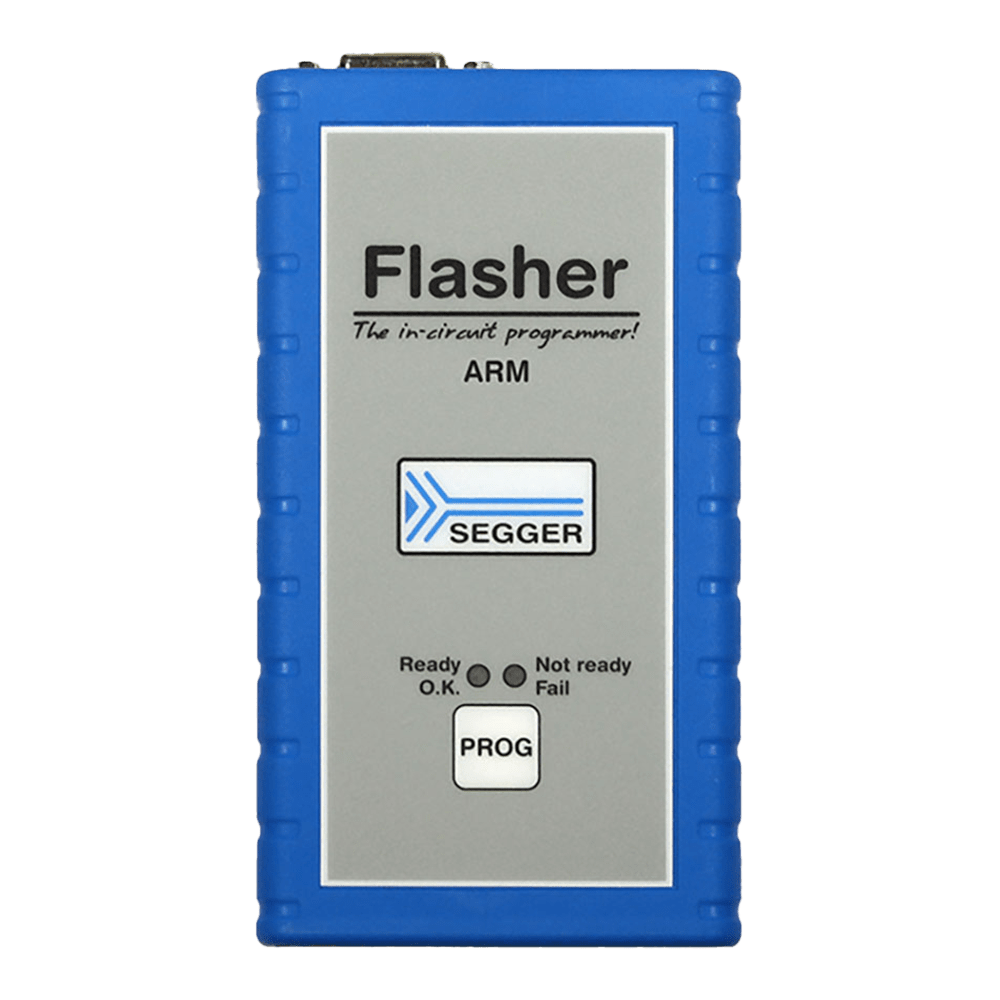
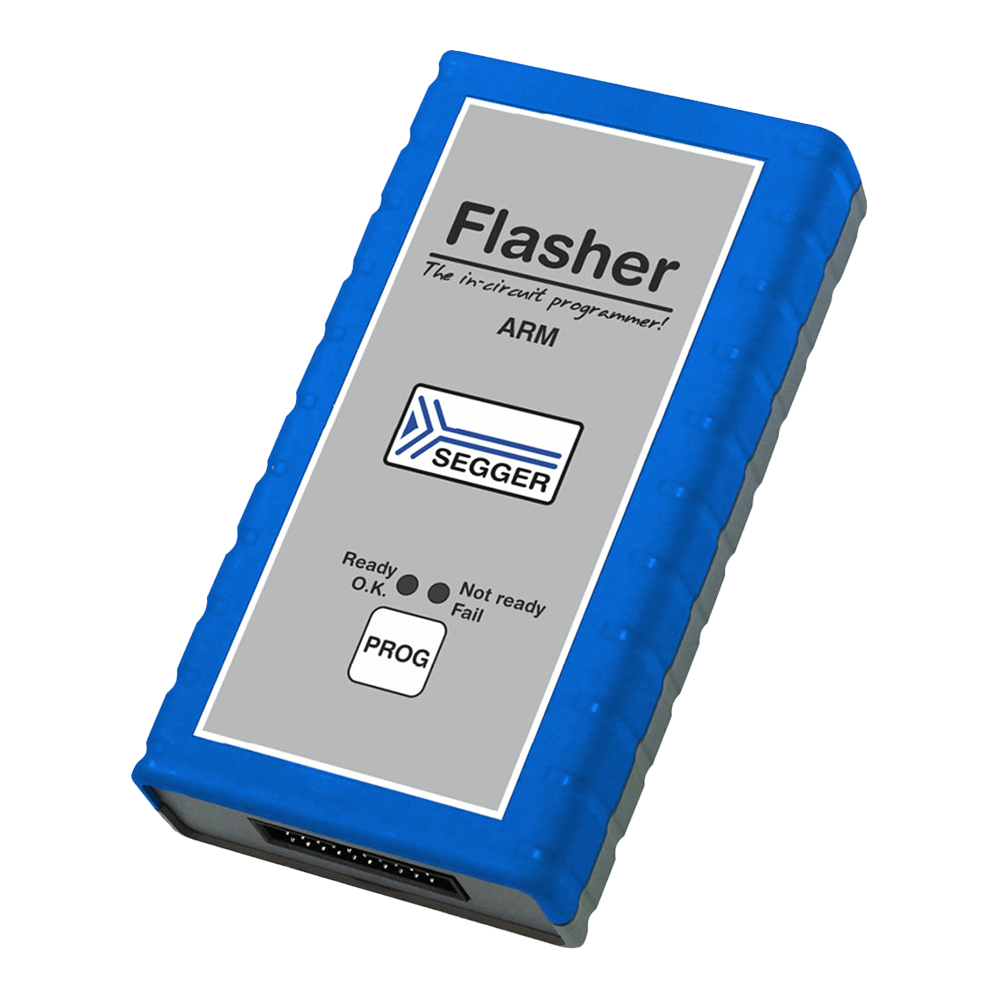
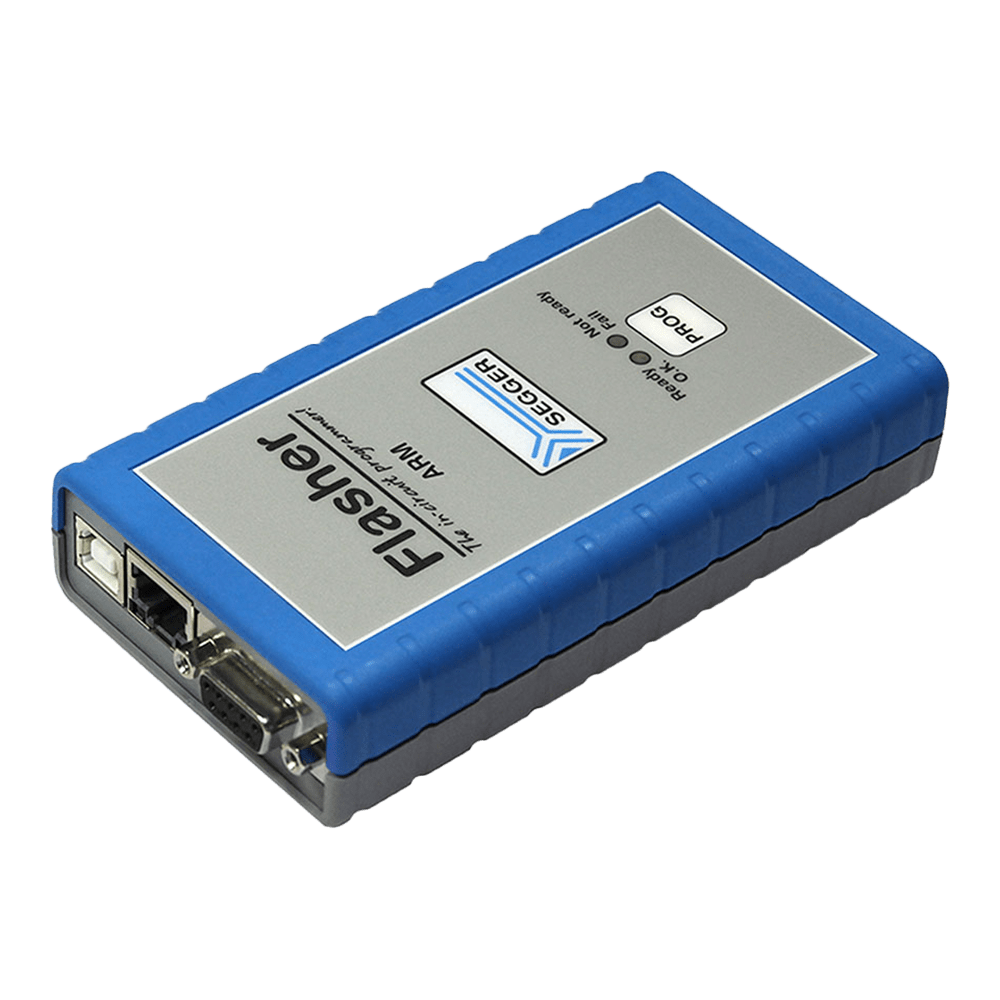
Key Features
Overview
The SEGGER Flasher ARM (5.07.01) delivers professional-grade flash programming for ARM-based microcontrollers in both development and production environments. This versatile programmer supports all major ARM cores from legacy ARM7/9/11 to modern Cortex-M and Cortex-A series, making it suitable for diverse embedded applications.
Unlike basic debug probes, the Flasher ARM functions as a complete standalone programming solution with 128 MB internal memory for storing multiple target programs. Its three operational modes—J-Link mode, standalone mode, and mass storage device mode—provide flexibility for different workflow requirements.
For production integration, the Flasher ARM includes authorised flashing capabilities that limit programming cycles and prevent unauthorised access—essential for contract manufacturing environments. Remote control via Ethernet, RS-232, or TTL signals enables seamless integration with automated test equipment.
Related products include the SEGGER Flasher Compact for space-constrained applications and the SEGGER Flasher PRO for multi-architecture support.
Downloads
Why Engineers Choose The SEGGER Flasher ARM Programmer (5.07.01) - Stand-Alone Production Flash Programmer
Production Line Integration
Standalone Operation
Comprehensive Device Support
Professional ARM Flash Programming Solution
The SEGGER Flasher ARM is a production-grade programming tool designed specifically for ARM core-based microcontrollers with on-chip or external flash memory. Once configured, it operates as a standalone JTAG/SWD programmer without requiring a PC connection, making it ideal for production environments and field programming applications.
Key Programming Capabilities
| Feature | Specification |
|---|---|
| Supported Cores | ARM7, ARM9, ARM11, Cortex-M0/M0+/M1/M3/M4/M7, Cortex-A5/A7/A8/A9/A12/A15/A17 |
| Target Interface | JTAG, SWD via 20-pin connector |
| Programming Speed | 30 KB/sec to 1 MB/sec (target dependent) |
| Internal Memory | 128 MB for target program storage |
Connection Interfaces
The Flasher ARM provides multiple connectivity options for flexible integration:
- USB 2.0: High-speed connection for PC control and power
- Ethernet (10/100 RJ45): Network-based programming and remote control
- RS-232 (DB9): Serial interface for automated test equipment integration
- 20-pin JTAG/SWD: Standard ARM debug connector
Wiring Quick-Start
Target Connection (20-pin JTAG/SWD): Pin 1: VTref Pin 2: NC Pin 3: nTRST Pin 4: GND Pin 7: TMS Pin 8: GND Pin 9: TCK Pin 10: GND Pin 13: TDO Pin 14: GND Pin 15: nRESET Pin 16: GND Pin 17: DBGRQ Pin 18: GND Pin 19: 5V-Out Pin 20: GND
SWD Mode (minimal connection):
Pin 1: VTref
Pin 7: SWDIO
Pin 9: SWCLK
Pin 15: nRESET
GND: Any even pin (2,4,6,8,etc.)
| General Information | |
|---|---|
Part Number (SKU) |
5.07.01
|
Manufacturer |
|
| Physical and Mechanical | |
Weight |
0.5 kg
|
| Other | |
Warranty |
|
HS Code Customs Tariff code
|
|
EAN |
5055383605736
|
Frequently Asked Questions
Have a Question?
-
What accessories are included with the Flasher ARM?
The complete kit includes the Flasher ARM unit, 20-pin ribbon cable, Ethernet cable, USB cable, RS-232 serial cable, and user documentation. Optional adapters are available for different target connector configurations including Cortex-M 10-pin and needle adapters.
-
What software is required to use the Flasher ARM?
The device works with SEGGER's J-Flash software for configuration and PC-controlled programming. All software, firmware updates, and flash loaders are provided free of charge. Cross-platform support includes Windows, Linux, and macOS operating systems.
-
Can the Flasher ARM be used as a standard J-Link debug probe?
Yes, the Flasher ARM includes complete J-Link functionality with debugging capabilities up to 720 KB/sec download speed. This dual functionality eliminates the need for separate programming and debugging tools during development phases.
-
What is authorised flashing and why is it important?
Authorised flashing limits the number of programming cycles and protects against unauthorised access in contract manufacturing environments. This security feature ensures intellectual property protection when programming occurs at external production facilities.
-
How do I integrate the Flasher ARM into production equipment?
The device offers multiple integration interfaces: Ethernet for network-based control, RS-232 for serial communication with test equipment, and TTL signals for hardware triggers. The ASCII command interface enables custom automation without specialised software requirements.
-
What external flash memory types are supported?
The Flasher ARM programs parallel NOR flash, serial NOR flash (including QSPI), NAND flash, and data flash devices. This extensive compatibility covers virtually all external memory configurations used in ARM-based embedded systems.
-
How fast can the Flasher ARM program target devices?
Programming speed ranges from 30 KB/sec to 1 MB/sec depending on target hardware capabilities and flash memory type. The optimised flash algorithms and high-speed USB 2.0 interface ensure maximum throughput for production programming requirements.
-
What target interface does the Flasher ARM use?
The Flasher ARM uses a standard 20-pin JTAG/SWD connector compatible with ARM development tools. It supports both JTAG and Serial Wire Debug (SWD) protocols, with SWD offering faster programming speeds and reduced pin count for space-constrained designs.
-
Can the Flasher ARM operate without a computer connection?
Yes, the Flasher ARM features standalone operation mode where it stores firmware images and configuration in its 128 MB internal memory. Programming can be triggered via push button, TTL signal, or remote commands through Ethernet/RS-232 interfaces, eliminating PC dependency in production environments.
-
What ARM cores does the Flasher ARM support?
The Flasher ARM supports all major ARM architectures including legacy ARM7, ARM9, ARM11 cores and modern Cortex-M (M0/M0+/M1/M3/M4/M7) and Cortex-A (A5/A7/A8/A9/A12/A15/A17) series. This comprehensive compatibility makes it suitable for both legacy system maintenance and new product development.

